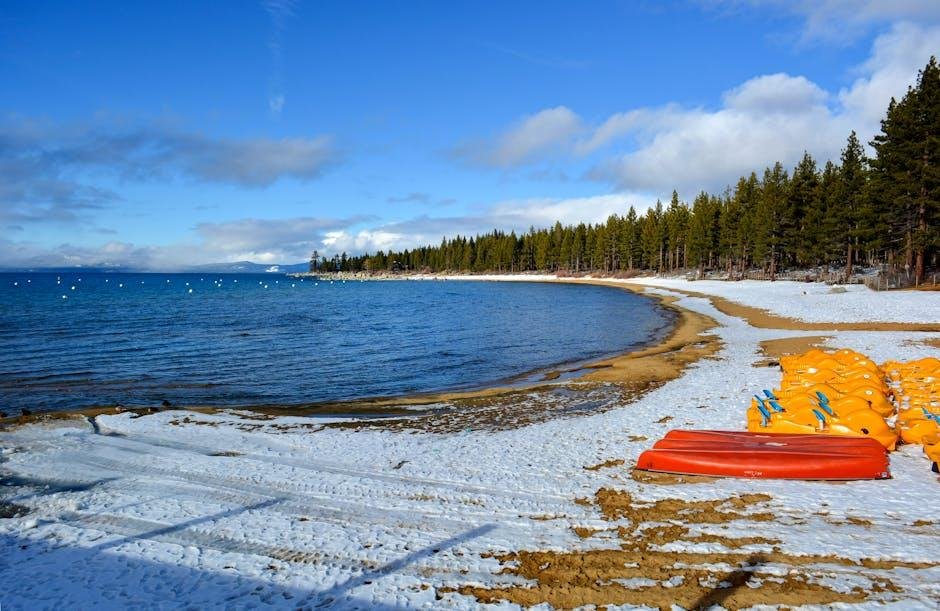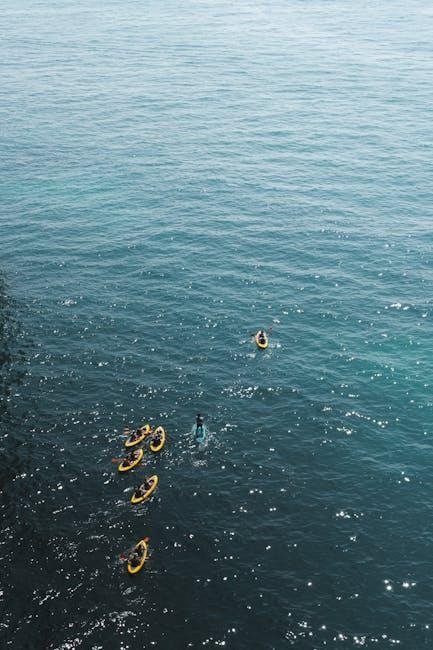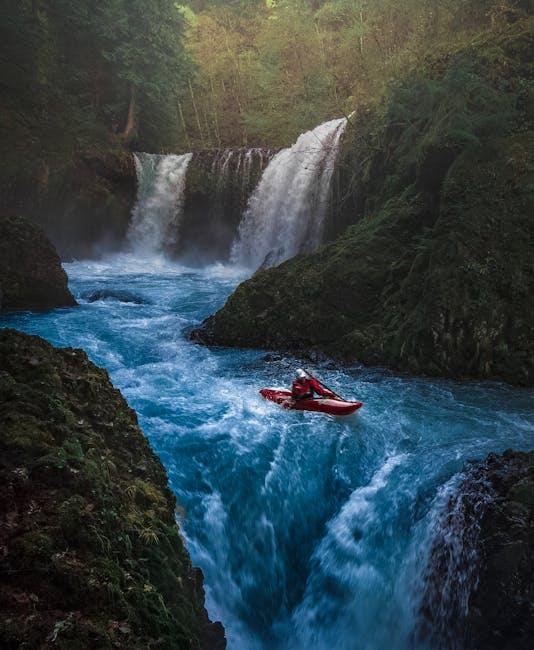There’s a certain allure to the open water: the gentle lapping of waves against your vessel, the whisper of the wind in your ears, and the promise of adventure just beyond the horizon. For outdoor enthusiasts and casual adventurers alike, kayaking offers a unique way to connect with nature, explore hidden coves, and enjoy the serenity that only comes with being on the water. But as you contemplate diving into this exhilarating pastime, an essential question arises: should you rent or buy a kayak? Each option comes with its array of advantages and challenges, and the ideal choice depends on factors like frequency of use, budget, and personal preferences. In this article, we’ll paddle through the pros and cons of renting versus buying a kayak, helping you navigate the seemingly murky waters of decision-making to find the best fit for your adventure-seeking spirit.
Evaluating the Financial Implications of Renting and Buying a Kayak
When considering the financial ramifications of kayaking, renting frequently enough seems like a more budget-kind option for occasional enthusiasts. Rental prices typically range between $20 to $60 per day, depending on the location and the type of kayak. This arrangement is financially favorable for those who kayak infrequently, as it circumvents the hefty initial investment required to purchase a kayak. Additionally, rentals frequently enough include essential gear like paddles and life jackets, wich can further reduce extra costs. However, if you enjoy kayaking regularly, these costs can quickly accumulate, making buying a better long-term investment.
On the other hand,the upfront cost of purchasing a kayak can be important,usually falling between $300 and $1,500 or more,depending on the quality and type. Yet, owning a kayak allows for freedom and versatility—eliminating rental fees and offering the ability to paddle whenever you desire. Here’s a quick comparison of costs over one year for both options:
| Expense Type | Renting (10 Days/year) | Buying |
|---|---|---|
| Rental Cost | $200 – $600 | Upfront Cost: $300 – $1,500 |
| Maintenance | N/A | $50 – $200/year |
| Storage | N/A | $100 – $300/year |
| Total Approximate Costs | $200 – $600 | $450 – $2,000 |
Ultimately, the decision hinges on your kayaking frequency, budget, and commitment to the sport. Evaluating your usage against the associated costs will elucidate whether renting or buying aligns better with your financial landscape. Whichever option you choose, ensuring you have quality equipment will enhance your kayaking experience.

Understanding Your Kayaking Habits and Preferences
Before you decide whether to rent or buy a kayak, it’s essential to reflect on your individual habits and preferences as an outdoor enthusiast. think about the frequency of your kayaking adventures and the environments you typically paddle in. If you’re a weekend warrior who enjoys the occasional day trip, renting might be more appealing. However, if you spend every summer weekend on the water or plan to embark on multi-day excursions, investing in your own kayak could be a more rewarding choice.
Your kayaking style can also play a significant role in this decision-making process. Consider factors such as:
- Skill Level: Are you a beginner or an expert? This can influence the type and design of kayak you need.
- Type of Water: Do you prefer calm lakes or rushing rivers? Different kayaks are tailored for specific waters.
- Storage Space: Do you have adequate storage for a kayak at home?
- Transporting Considerations: How will you get the kayak to your preferred paddling location?
Below is a simple comparison table highlighting some essential differences between renting and buying a kayak:
| Aspect | Renting | Buying |
|---|---|---|
| Cost | Lower upfront cost | Higher initial investment |
| Variety | Access to different types | Limited to your choice |
| Maintenance | No responsibility | Ongoing upkeep required |
| Commitment | No long-term ties | Long-term ownership |

Exploring Maintenance and Storage Considerations
When deciding between renting and buying a kayak,one essential aspect to consider is the maintenance and storage requirements that each option entails. Owning a kayak means taking on the responsibility of regular upkeep to ensure its longevity. Proper maintenance includes washing off saltwater or sand, checking for any hull damage, and applying protective wax or UV protectant. Additionally, the kayak should be stored in a cool, dry place to prevent damage from weather elements. Here are some tips for kayak maintenance:
- Inspect your kayak regularly for cracks, dents, and wear.
- Clean the kayak after each use to remove dirt and salt.
- Store it away from direct sunlight and preferably elevated off the ground.
Conversely, renting a kayak often alleviates the stress of maintenance and storage. Rental services typically handle all the necessary upkeep and secure storage, allowing you to focus on enjoying your time on the water. This can be particularly advantageous for novice paddlers or those who kayak infrequently. However, if you plan to paddle regularly, the convenience of rental may come with its own set of drawbacks.Consider the following aspects when evaluating rental options:
| Aspect | Renting | Buying |
|---|---|---|
| Maintenance Responsibility | Rental company handles it | Owner’s responsibility |
| Storage Needs | No storage required | Requires dedicated space |
| Initial Cost | lower (per use) |
Higher (initial investment) |

Assessing the Local Kayaking Environment and Opportunities
When deciding whether to rent or buy a kayak, it’s essential to assess the local kayaking environment and the opportunities available to you. The characteristics of your surrounding waters can greatly influence your choice. Consider factors such as:
- Water Types: Are you primarily paddling in lakes, rivers, or ocean waters? Each environment may require different types of kayaks.
- Accessibility: How easy is it to transport your kayak to your preferred launches? Assess the distance and available infrastructure.
- Weather Patterns: What is the climate like in your region? Frequent storms or extreme temperatures can impact the longevity and usability of a kayak.
- Local Amenities: Are there nearby rental services or kayaking clubs that can enhance your experience?
the opportunities to engage with the local kayaking community also play a significant role in your decision. Renting allows you to experience various kayak types and styles without the commitment of ownership. You might discover that certain models suit your needs better as you explore:
| Kayak Type | Rental Availability | Usage Context |
|---|---|---|
| Recreational | High | Calm lakes and slow rivers |
| touring | Medium | Long-distance paddling |
| Whitewater | Low | Rivers with rapids |
| Sea Kayak | Medium | Open water and coastal areas |
Analyzing your local water conditions, accessibility, climate, and community offerings will lead you to a well-informed decision on whether renting or buying aligns best with your kayaking ambitions.
Final Thoughts
As we paddle toward the conclusion of our exploration on renting versus buying a kayak, it’s clear that both options offer distinct advantages and cater to different needs. Renting provides the flexibility of trying various styles without the long-term commitment—perfect for the casual paddler or those just dipping their toes into the world of kayaking. On the other hand, purchasing a kayak can lead to a deeper connection with the water and the adventures it promises, making it an appealing option for frequent enthusiasts.
Ultimately, the decision hinges on your lifestyle, budget, and level of commitment. Whether you choose to rent and roam or invest and own, the key is to embrace the journey—after all, it’s not just about the vessel, but the experiences that await on the shimmering waters. So, grab your paddle and let your choice guide you toward new horizons—whether you’re gliding along a serene lake or navigating choppy rivers, every outing holds the potential for unforgettable memories. Happy paddling!
